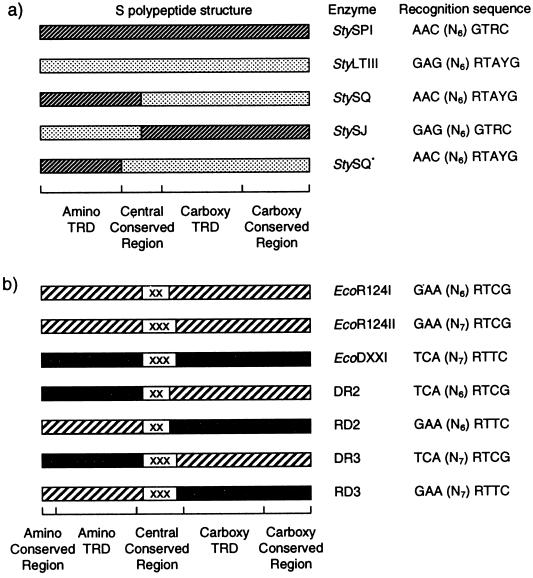FIG. 9.
Evolution of type I R-M systems with new specificities. (a) Recombination between hsdS genes produces hybrid genes and chimeric S polypeptides. StySPI and StyLTIII are naturally occurring type I R-M systems (see Table 2). StySQ and StySJ have hybrid hsdS genes (55, 56). The regions originating from StySPI are hatched, and those originating from StyLTIII are stippled. Reassortment of the target recognition domains (TRDs) accordingly gave rise to recombinant recognition sequences (56, 127). Site-directed mutagenesis of the central conserved region of the StySQ hsdS gene produced StySQ*, comprising only the amino-terminal variable region from StySPI and the remainder from StyLTIII. The StySQ* target sequence confirms that the amino-terminal variable region is in fact a TRD responsible for recognition of the trinucleotide component of the sequence (33). (b) Sequence specificity may also be altered by changing the length of the nonspecific spacer of the target sequence. The S polypeptides of EcoR124I and EcoR124II differ only in the number of times a short amino acid motif (X = TAEL) is repeated within their central conserved regions (142), resulting in extension of the spacer in the target sequence from six nucleotides (N6) in EcoR124I in N7 in EcoR124II. The recognition sequence of EcoDXXI also contains a nonspecific spacer of seven nucleotides, corresponding to three TAEL repeats in its S polypeptide (64). Chimeric S polypeptides recognize the predicted target sequences (64). Modified from a figure in Barcus and Murray (10) with permission.

